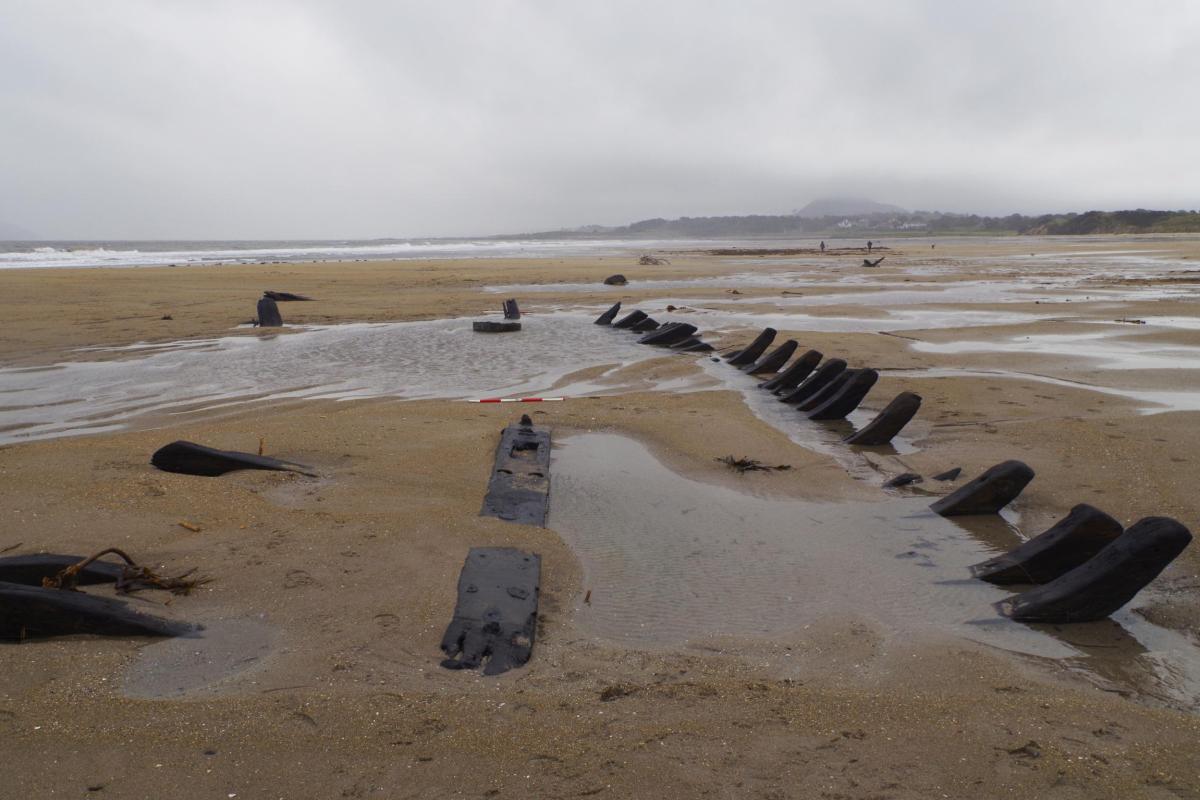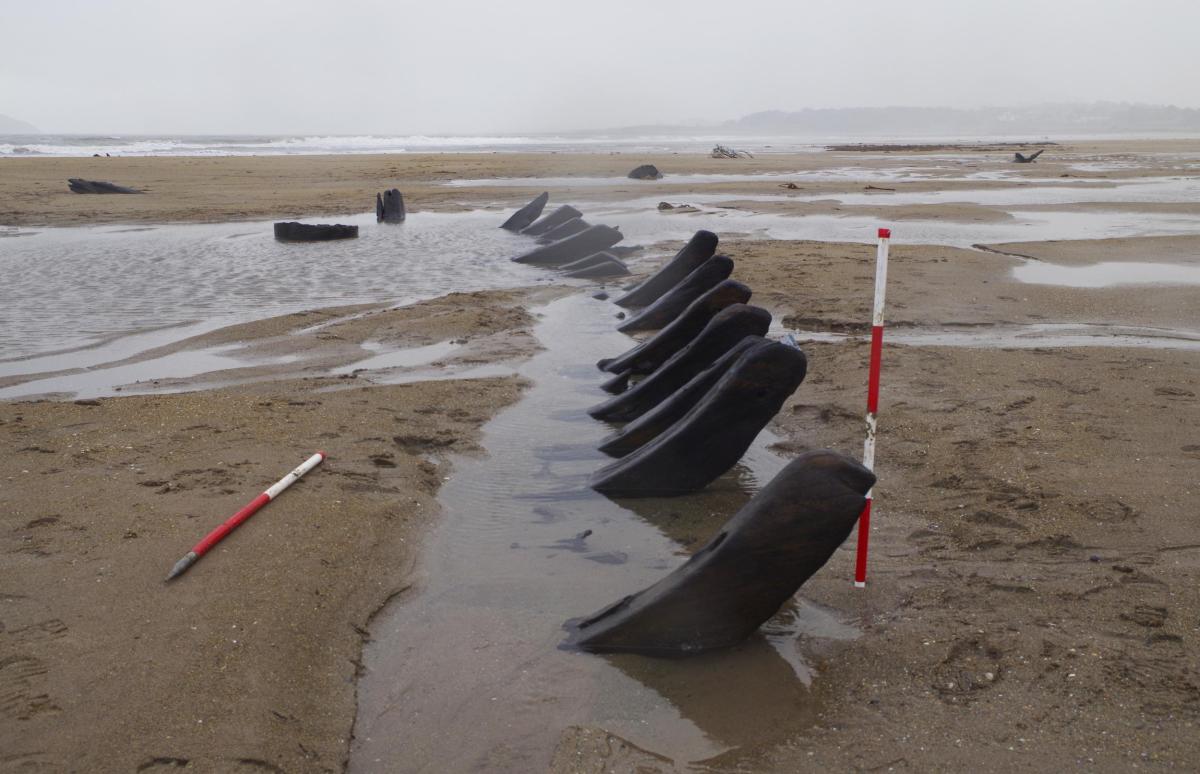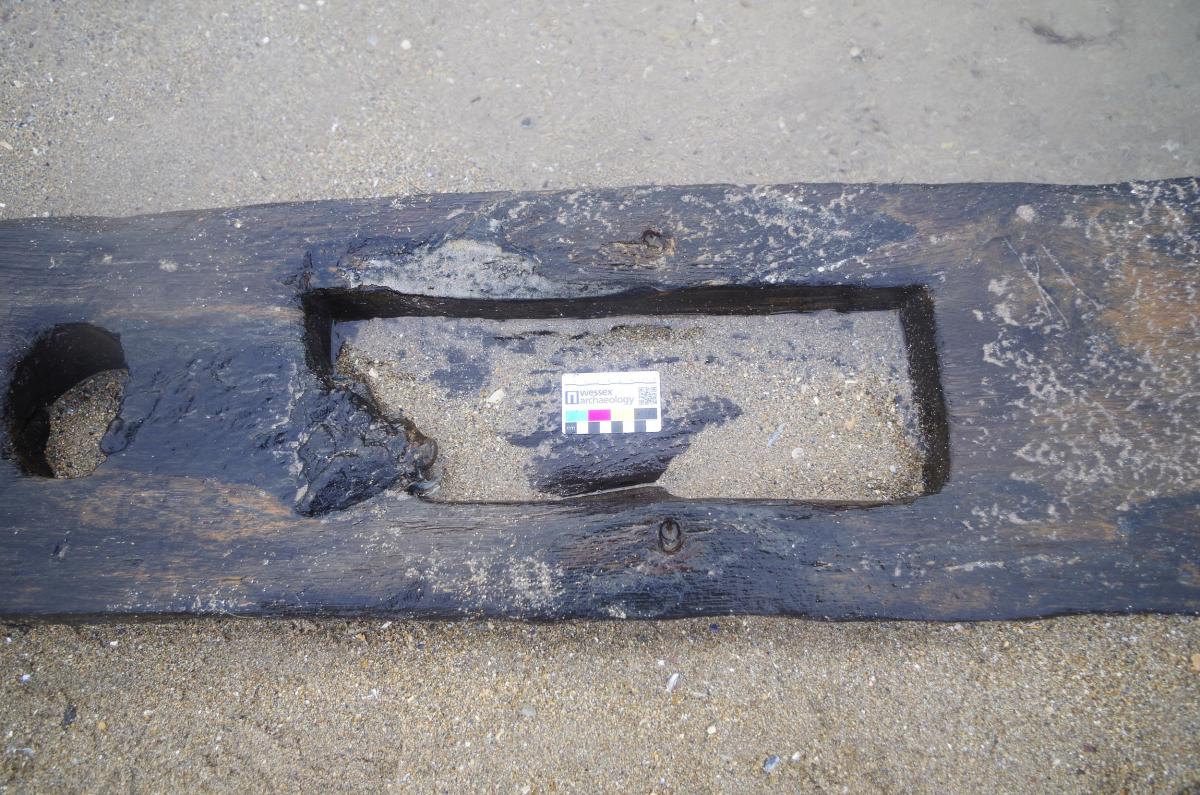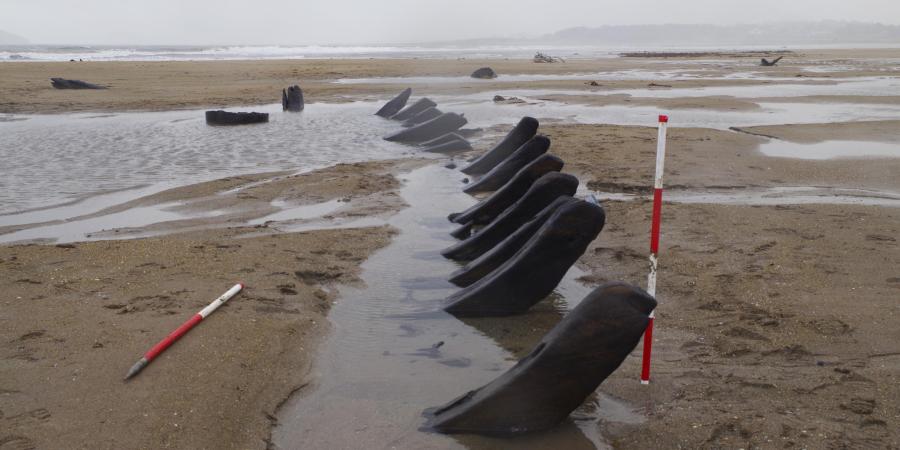By Ben Saunders, Senior Marine Archaeologist.
Winter storms don’t just cause havoc for modern infrastructure; they also have the potential to damage historic structures, as seen at North Berwick Harbour, where the harbour walls were breached during Storm Babet in November 2023. These weather events also uncover buried archaeology along our coastlines. The removal of sediment from the shoreline can expose archaeology or indeed disperse the remains of underwater heritage sites, from shipwrecks to crashed aircraft.
In November and December 2023, storms had a profound impact on the coastline of East Lothian, due to the northeasterly winds that roared along the Forth. Shipwreck material from an unknown submerged wreck, including keel and frame pieces, was deposited on Seton Sands, as well as a fragment of an unknown aircraft wreck. After reports of the material came in from our friends at 1722 Waggonway Heritage Group, we carried out our initial recording of the site. Using the data captured, we’re undertaking research to try to identify the ship and aircraft.

Intact wreck material on Yellowsands Beach, East Lothian
The remains of a more intact wooden shipwreck appeared on Broad Sands, west of North Berwick following the storm, which removed enough sand from the beach for elements of the ship to be exposed. The timber ribs, stem post and keelson with the recess for a mast were spotted by an eagle-eyed dogwalker who reported them to our coastal and marine archaeologists at our Edinburgh office.
After a rapid condition survey, the team found that the wreck was an oak-built ship of at least 6 m beam and 25 m long which had also seen repairs to it using iron fittings. Looking through the historical records for wrecks and reported losses in the area. the team found the most likely candidate to be the Verein, a German two-masted brigantine which stranded in a storm one mile west of North Berwick in 1884. The ship, registered at Stralsund in the Baltic, was carrying a cargo of oak from Stettin to Sunderland when it was wrecked. The crew survived and were looked after by the people of North Berwick, as presumably was the cargo of oak. 140 years between northeasterly storms, one forcing the ship onto the beach and the other uncovering its remains.

Frames from the starboard side of the wreck, facing forward
Our coastal and marine archaeologists complete wreck surveys as part of our client-funded work, as well as in partnership with Historic Environment Scotland and Historic England. We also developed community training programmes in partnership with local organisations. Previous projects include the Aberlady X-Craft surveys supported by Breaking Ground Heritage and the National Lottery Heritage Fund and Cockenzie Harbour surveys with 1722 Waggonway Heritage Group.
Previously hidden coastal archaeology can be uncovered at any time and is often only exposed for a short period before natural processes cover or remove it.

Probable mast step recess in keelson of wreck
You can find out more about how you can help to record and report coastal archaeology via the Scape Trust in Scotland, CITiZAN in England and CHERISH in Wales
